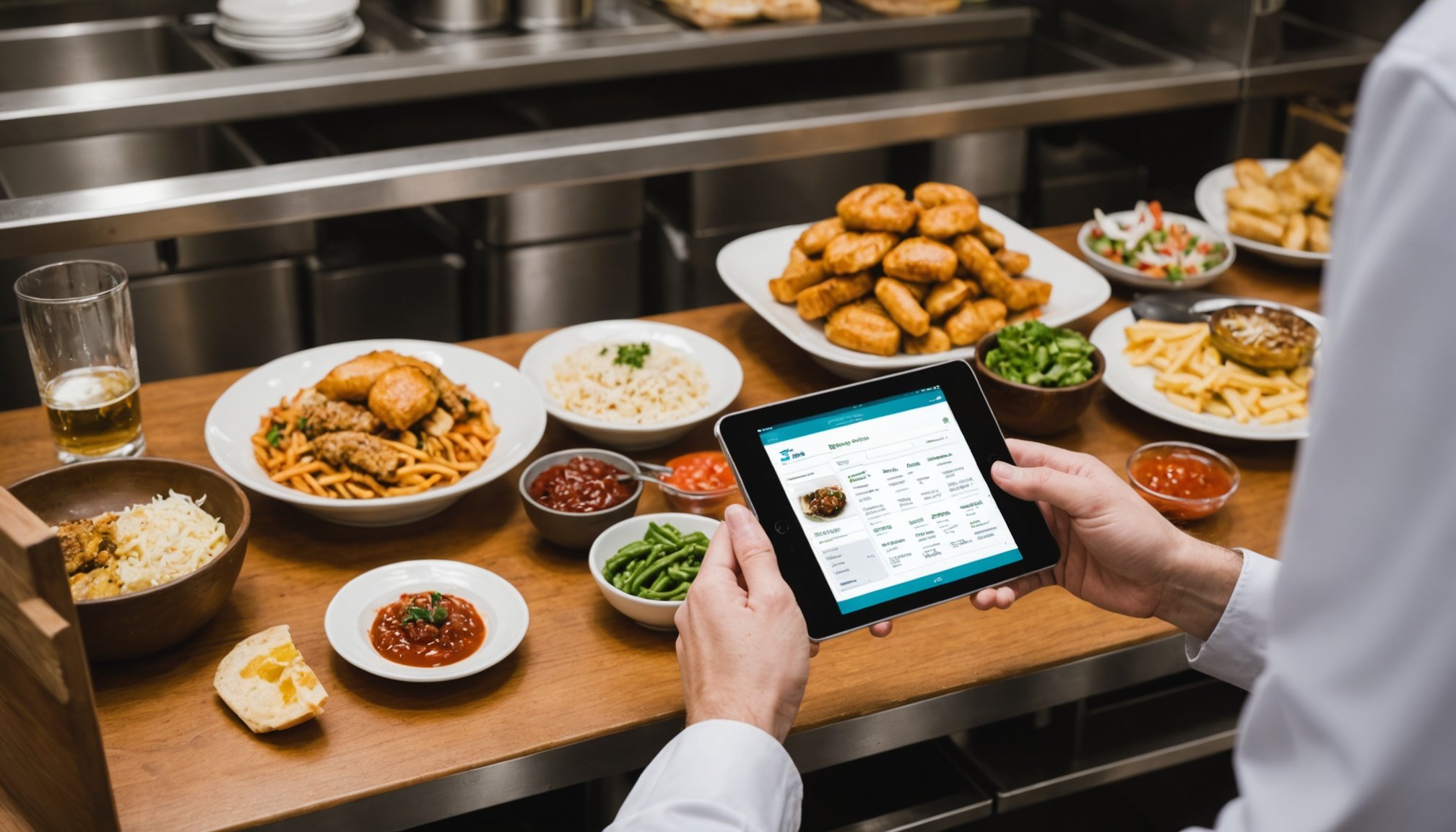Understanding Food Traceability in Restaurants
Food traceability in the restaurant industry involves tracking the journey of food products from origin to the plate. This practice ensures that every step of the supply chain is transparent, helping restaurants guarantee food safety and quality. With increasing consumer demand for transparency, supply chain transparency becomes pivotal in maintaining trust and safeguarding public health.
Regulatory requirements for food traceability are stringent and vary across regions. These regulations ensure that restaurants can quickly respond to any food safety issues by tracing the source of the problem back to its origin. Adhering to these regulations isn’t just about maintaining restaurant compliance, but also about enhancing reputation and consumer confidence.
Effective traceability systems in restaurants offer numerous benefits. They enable quick recalls, reduce waste by improving inventory management, and enhance brand reputation by demonstrating a commitment to quality and safety. By investing in traceability, restaurants not only align with compliance mandates but also offer their customers peace of mind. In today’s competitive market, such systems can be a significant differentiator.
Restaurant compliance with traceability practices involves integrating these systems into day-to-day operations. This not only supports regulatory adherence but also fosters a culture of safety and responsibility, ultimately benefiting both the business and its clientele.
Also to see : Transforming café orders: cutting-edge tech innovations for an effortless experience
Key Regulations and Standards for Food Traceability
Adhering to regulatory compliance in food traceability ensures that restaurant operations are aligned with relevant food safety standards and industry regulations. These regulations can vary significantly based on jurisdiction and are crucial for maintaining public health.
National and International Regulations
In the United States, key federal regulations include the Food Safety Modernization Act (FSMA), which emphasizes preventive controls and traceability. Internationally, standards such as the Global Food Safety Initiative (GFSI) and ISO 22000 are becoming benchmarks for traceability systems. The European Union enforces stringent regulations, including the General Food Law, which obliges businesses to implement traceability measures that can track one step backward and forward.
The differences between jurisdictions can be substantial. For example, the regulatory landscape in the EU prioritizes both internal and external traceability, whereas U.S. regulations focus more on preventative practices. This poses challenges for multinational restaurants seeking uniform compliance but also presents opportunities to adopt best practices across borders.
Industry-Specific Guidelines
Food safety organizations like the FDA and USDA provide guidelines that are tailored to various restaurant types, such as those focusing on specific cuisines or service styles. Aligning with these best practices not only boosts compliance efforts but also enhances overall operational efficiency and trustworthiness in consumer relations.
Steps to Implement a Food Traceability System
Implementing a food traceability system in a restaurant begins with a thorough assessment of current practices. This evaluation identifies gaps and areas for enhancement in traceability implementation. By recognising these weak points, restaurants can lay a strong foundation for improvement, ensuring that every touchpoint is monitored and recorded.
After the assessment, the next step is developing a comprehensive traceability plan. This plan should outline clear goals, best practices for traceability, and detailed operational steps. Best practices might include establishing checkpoints in the supply chain and ensuring consistent recording at each stage.
Additionally, implementing technology solutions plays a crucial role in enhancing traceability. Utilising digital tools such as databases or QR codes can streamline the process by providing instant access to detailed product histories. Automating parts of the supply chain monitoring ensures operational steps are efficient and trustworthy.
Lastly, ongoing training for staff is imperative to the success of this system. Employees must understand the procedure and their role in maintaining traceability implementation efforts. Consistent monitoring and updating of the system ensure it evolves with industry standards, ultimately safeguarding both the restaurant’s reputation and consumer trust.
Technology Solutions for Food Traceability
In the rapidly evolving restaurant industry, leveraging traceability technology has become indispensable. It ensures seamless tracking throughout the supply chain, enhancing food safety and operational efficiency. Digital solutions like RFID and IoT devices serve as game-changers in this domain.
RFID and IoT Applications
RFID technology revolutionises food traceability by offering accurate and instant tracking. It automates data collection, reducing human error and ensuring precise inventory management. The use of IoT devices complements RFID, enabling real-time monitoring of conditions such as temperature, which is crucial for perishable goods. Successful case studies demonstrate how these technologies help restaurants in maintaining strict food safety standards.
Software Solutions
The market offers a range of software specifically designed for food traceability, each boasting unique features. Key attributes include user-friendly interfaces, robust data analytics, and integration capabilities with existing systems. Software for restaurants not only streamlines compliance efforts but also enhances data transparency, building trust with consumers and suppliers. By automating processes, these solutions significantly reduce manual workload and improve accuracy, thereby aligning seamlessly with regulatory requirements.
Challenges and Solutions in Food Traceability Compliance
In the restaurant industry, implementing food traceability systems poses notable challenges. One of the primary compliance challenges includes adapting existing operations to integrate new traceability norms. Restaurants must navigate complex operational hurdles, such as verifying supplier compliance and updating inventory management processes. The initial cost and learning curve of new technologies can also contribute to these difficulties.
Effective risk management involves adopting strategic approaches to these challenges. Solutions often include phased implementation and leveraging technology to streamline processes. Creating comprehensive training programmes ensures staff are well-equipped to handle the demands of traceability systems. By doing so, restaurants minimise errors and enhance efficiency, thus overcoming operational barriers.
Staff training plays a crucial role in successful traceability implementation. Employees need to understand their specific roles in compliance and how their actions contribute to broader safety goals. Ensuring staff engagement helps foster a culture of responsibility and adherence to standards. Regular workshops and feedback sessions can help maintain high engagement and align team efforts towards improving operational practices.
Ultimately, embracing these strategies enables restaurants to maintain robust compliance, ensuring not only regulatory alignment but a reputation for quality and safety in the eyes of consumers.
Continuous Monitoring and Improvement
Effective traceability monitoring is crucial for restaurants to ensure their systems remain robust and reliable. Regular compliance audits play a vital role in this process. These audits help restaurants identify any deviations from established standards and address issues promptly. Preparing for an audit involves reviewing documentation, setting clear objectives, and training staff to understand audit procedures. Key performance indicators, such as tracking accuracy and speed of response to discrepancies, are essential to assess a system’s effectiveness.
Regular Compliance Audits
Conducting regular compliance audits helps maintain the integrity of traceability systems. These audits verify that all components of the traceability framework are functioning correctly and in line with regulatory requirements. To prepare, restaurants should compile all necessary documents, define audit goals, and conduct staff training. Audits reveal critical performance areas: data accuracy, response time to traceability issues, and training effectiveness.
Continuous Improvement Practices
Incorporating feedback loops ensures ongoing enhancements in traceability systems. By actively seeking input from both staff and consumers, restaurants can make informed decisions about system upgrades. Keeping abreast of regulatory changes and industry best practices allows restaurants to adjust their strategies and remain compliant. Engaging with stakeholders further contributes to seamless traceability, driving better outcomes and reinforcing trust.








